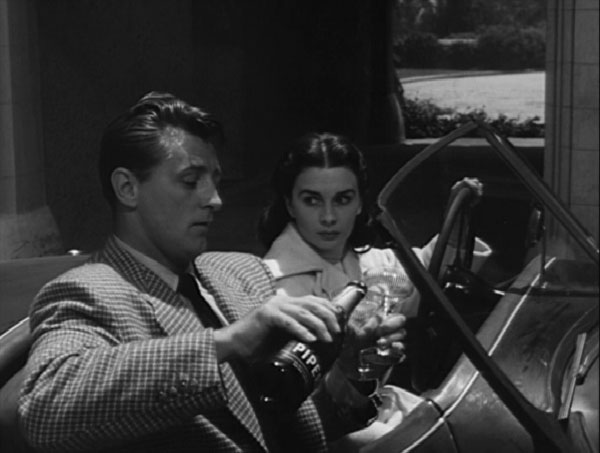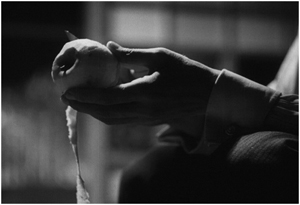A VERY LONG ENGAGEMENT
2004, Jean-Pierre Jeunet, France / United States
Repeat Viewing, DVD
After marveling at the performance of the wonderful Marion Cotillard gave in La Vie En Rose I needed to see something from her again. I remembered her brief but enjoyable supporting role in A Very Long Engament a film I have not seen since the theater, so I decided to give it another viewing. A Very Long Engagement is a re-collaboration of the magical team of the irresistible 2001 film, Amelie: director Jean-Pierre Jeunet, and star Audrey Tautou. While I can’t say I enjoyed it as much as that film, I commend Jeunet for his ambitious filmmaking achievement. While dealing with a much more grim subject (World War I), A Very Long Engagement at it’s heart (and strength) is surreal, comic fantasy full of Jenuet’s charm and humor which shares many of the qualities of Amelie. It does have a lot to offer and many levels, layers, and subplots which do slightly effect Jeunet’s strengths as a filmmaker. It’s aiming very high and is very ambitious as it follows two separate intertwining narratives centering around the romance of Manech (Gaspard Ulliel) and Mathilde (Audrey Tautou). We are shown the perspective of the World War I setting (most notably the events surrounding the trench of Bingo Crepuscule). The other story is Mathilde’s search for answers to the fate of Manech, whom she knows in her heart is still alive. Jeunet is one of France’s most gifted filmmakers working today, and his technique skills and emotions are on full display. Contrasting images of the horrors of the World War I trenches with the colorful beauty and unique comedy of home life. The battle sequences are graphic and startling, but Jeunet shines when dealing with the surreal or bizarre moments of humor (ie. the background of the 5 condemned soldiers, or the montages of the postman, etc). In pretty much any film, Tautou is always an adorable leading lady (sort of a French Mary Pickford I guess) and here she plays Mathilde with likable (and at times touching) charm. The supporting characters are equally wonderful and give the Mathilde-Manech romance a heart and emotional connection… It’s great to see Jodie Foster in her first French role, and of course Marion Cotillard is especially memorable as the sexy and vengeful Tina Lombardi (even if her role makes the narrative a bit uneven it works because she is so engaging to watch). Despite all that is happening, the narration and charm of the characters make it pretty easy to follow. Though the ending is expected it’s portrayed beautifully and will certainly move you. I am not so sure I’d rate Jeunet in the class of a master filmmaker, but he makes entertaining films, and while not his best, A Very Long Engagement has its qualities.
IN THE BEDROOM
2001, Todd Field, United States
Repeat Viewing, IFC
Todd Field acclaimed 2001 drama, In the Bedroom, is moving on many levels (both in terms of filmmaking and emotional impact) and leaves the viewer with much to ponder and remember. Field presents the film in a mysterious emotional way through rhythmic pace and symbolic imagery. What it ultimately effects is the final moments which raises thought-provoking ideas upon the entire film (while also completely shifting the tone of the film without an ounce of forced melodrama). There are moments that are calm and quiet, while exhilarating within a flash. In the Bedroom is essentially divided into a multiple character-study and the deteriorating grief of tragedy they are living with. This is the rhythmic flow that Field has so excellently created with this film. Of course one of the keys of the dramatic force is undeniably in the reliance of the performances, which are top-notch all the way. Field's background began in acting and his sensible understanding of the dramatic performance is evident when watching him director these actors (Tom Wilkinson is particularly outstanding, especially in the previous mentioned conclusion of the film). This is the type of film that leaves a greater impact with more thought and with repeat viewings. I like the enigmatic sense of direction Field gives this otherwise straight-forward drama (which examines depths of tragic loss, grief, and anger). In the Bedroom is a powerful film and a great feature filmmaking debut.
MOULIN ROUGE!
2001, Baz Luhrmann, Austrailia / United States
Repeat Viewing, AMC
Moulin Rouge is a stylish visual feast of a film, and it's a ton of fun to watch. Moulin Rouge takes everything you have seen and love about musicals and turns it on its head. The result is one of the most energetic films you’ll ever experience!! The storyline is very basic, but Baz Lurhmann broadens it with an imaginative blend of eye-candy. beautiful people, bright colors, eccentric costumes, trendy (and even modern!) music, and wonderful sets fill the screen with energy. The energy is also created through Luhrmann's traditional amounts of cuts. Though I personally don't usually like a film that over-cuts, it works perfectly with this film. Also, the performances (particularly that of Nicole Kidman) are very good, which can be difficult to notice with a film of so many quick cuts, and fast-paced editing. One of the films great joys is that the stylish visuals and energy are supported by the wonderful compassion and feelings the film, and most specifically its characters, carry. Bottom line, Moulin Rouge is a wonderfully creative, visually bold, sexy, romantic, and joyous film. There really isn’t much to say about this film, but rather it is one that loudly speaks for itself when watching it.





